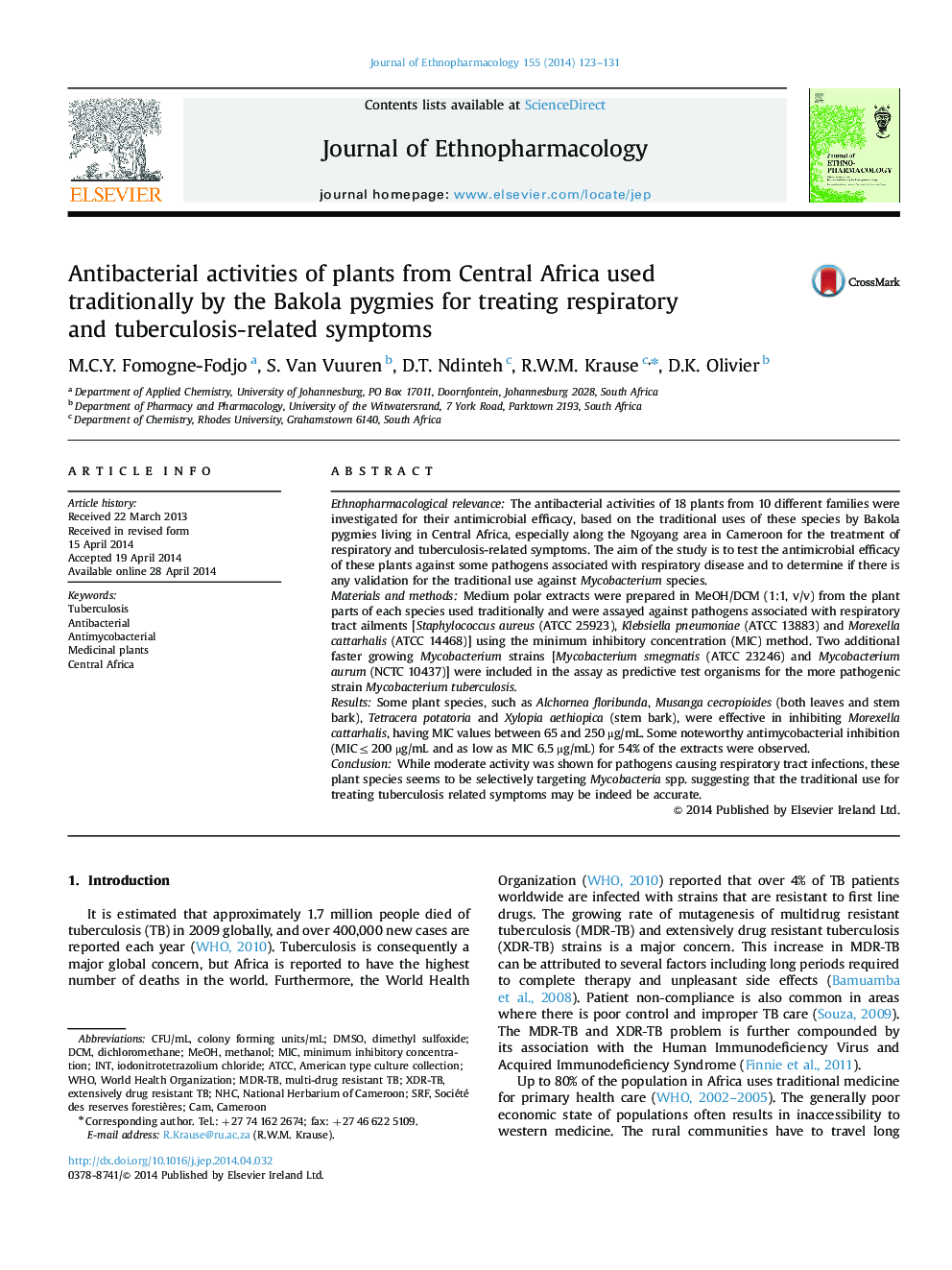| کد مقاله | کد نشریه | سال انتشار | مقاله انگلیسی | نسخه تمام متن |
|---|---|---|---|---|
| 5836320 | 1123944 | 2014 | 9 صفحه PDF | دانلود رایگان |

Ethnopharmacological relevanceThe antibacterial activities of 18 plants from 10 different families were investigated for their antimicrobial efficacy, based on the traditional uses of these species by Bakola pygmies living in Central Africa, especially along the Ngoyang area in Cameroon for the treatment of respiratory and tuberculosis-related symptoms. The aim of the study is to test the antimicrobial efficacy of these plants against some pathogens associated with respiratory disease and to determine if there is any validation for the traditional use against Mycobacterium species.Materials and methodsMedium polar extracts were prepared in MeOH/DCM (1:1, v/v) from the plant parts of each species used traditionally and were assayed against pathogens associated with respiratory tract ailments [Staphylococcus aureus (ATCC 25923), Klebsiella pneumoniae (ATCC 13883) and Morexella cattarhalis (ATCC 14468)] using the minimum inhibitory concentration (MIC) method. Two additional faster growing Mycobacterium strains [Mycobacterium smegmatis (ATCC 23246) and Mycobacterium aurum (NCTC 10437)] were included in the assay as predictive test organisms for the more pathogenic strain Mycobacterium tuberculosis.ResultsSome plant species, such as Alchornea floribunda, Musanga cecropioides (both leaves and stem bark), Tetracera potatoria and Xylopia aethiopica (stem bark), were effective in inhibiting Morexella cattarhalis, having MIC values between 65 and 250 μg/mL. Some noteworthy antimycobacterial inhibition (MICâ¤200 μg/mL and as low as MIC 6.5 µg/mL) for 54% of the extracts were observed.ConclusionWhile moderate activity was shown for pathogens causing respiratory tract infections, these plant species seems to be selectively targeting Mycobacteria spp. suggesting that the traditional use for treating tuberculosis related symptoms may be indeed be accurate.
224
Journal: Journal of Ethnopharmacology - Volume 155, Issue 1, 8 August 2014, Pages 123-131